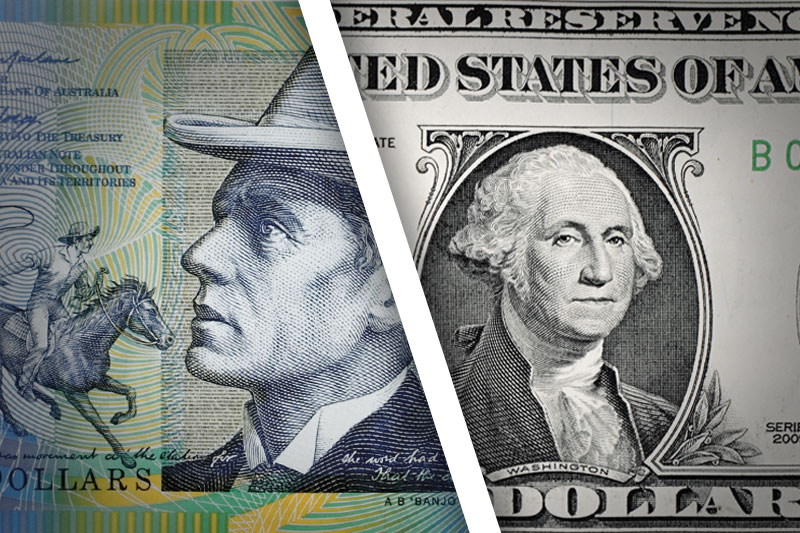Investing.com - The Australian dollar ended Friday’s session close to a four-week low against its U.S. counterpart, as lingering concerns over the health of China’s economy and a weakening Chinese Yuan dampened sentiment.
AUD/USD fell to 0.8902 on Thursday, the pair’s lowest since February 5, before subsequently consolidating at 0.8928 by close of trade on Friday, down 0.42% for the day and 0.55% lower for the week.
The pair is likely to find support at 0.8902, the low from February 27 and resistance at 0.9024, the high from February 26.
Concerns over a decline in the Chinese yuan curbed risk appetite, amid speculation that the country’s central bank has intervened to add volatility to the currency ahead of possible economic reforms.
Data released over the weekend showed that China’s official manufacturing PMI fell to an eight-month low of 50.2 in February from 50.5 in January.
The Asian nation is Australia’s largest trade partner.
Meanwhile, the Aussie came under additional pressure amid expectations that the Federal Reserve will continue to gradually reduce the pace of its asset purchase program.
Data released Friday showed that Chicago's purchasing managers' index rose to a four-month high of 59.8 in February, from a reading of 59.6 the previous month, compared to expectations for a fall to 57.0.
A separate report from the University of Michigan showed that its consumer sentiment index rose to 81.6 this month, from a reading of 81.3 in January. Analysts had expected the index to edge up to 81.3 in February.
The upbeat data came after the Commerce Department said that U.S. fourth quarter gross domestic product was revised down to an annual rate of 2.4%, from a preliminary estimate of 3.2%. Analysts had expected a downward revision to 2.5%.
Earlier in the week, Fed Chair Janet Yellen acknowledged recent weakness in U.S. data, saying it indicates softness in the economy.
In testimony to the Senate banking committee in Washington on Thursday, Ms. Yellen said it was hard to say how much the recent soft data was due to weather and added that the central bank would be attentive to signals on whether the recovery is progressing in line with expectations.
Data from the Commodities Futures Trading Commission released Friday showed that speculators reduced their bearish bets on the Australian dollar in the week ending February 25.
Net shorts totaled 38,991 contracts, down 12.2% from the previous week’s total of 44,398 net shorts.
In the week ahead, investors will be anticipating Friday’s U.S. nonfarm payrolls report for an indication of the strength of the recovery in the labor market and the future course of monetary policy.
An interest rate decision by Reserve Bank of Australia will also be in focus. The Pacific nation is also due to produce data on fourth quarter economic growth, retail sales, building approvals as well as a report on the nation’s trade balance.
Ahead of the coming week, Investing.com has compiled a list of these and other significant events likely to affect the markets.
Monday, March 3
Australia is to publish a report on company operating profits.
China is to produce data on service sector activity, as well as a revised reading on the HSBC manufacturing index.
The U.S. is to release data on personal spending, while the Institute of Supply Management is to release data on manufacturing activity.
Tuesday, March 4
The RBA is to announce its benchmark interest rate and publish its monetary policy statement, which outlines economic conditions and the factors affecting the bank’s decision.
Australia is also to publish data on building approvals and the current account.
Wednesday, March 5
Australia is to publish data on fourth quarter gross domestic product, the broadest indicator of economic activity and the leading measure of the economy’s health.
The U.S. is to release the ADP report on private sector job creation, which leads the government’s nonfarm payrolls report by two days. Meanwhile, the ISM is to publish a report service sector activity.
Thursday, March 6
Australia is to publish data on retail sales and the trade balance, the difference in value between imports and exports.
The U.S. is to publish the weekly report on initial jobless claims and data on factory orders.
Friday, March 7
RBA Governor Glenn Stevens is to testify before the House of Representatives Economic Committee, in Sydney; his comments will be closely watched.
The U.S. is to round up the week with the closely watched government data on nonfarm payrolls and the unemployment rate.
